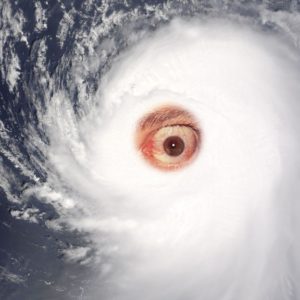Want to experience the greatest in board studying? Check out our interactive question bank podcast- the FIRST of its kind here: emrapidbombs.supercast.com
Author: Blake Briggs, MD
Peer Reviewer: Mary Claire O’Brien, MD
Introduction
Myxedema coma is severe hypothyroidism leading to decreased mental status and slowed metabolism of multiple organs. It is a medical emergency with a high mortality rate. It is thankfully very rare nowadays, but still very popular in medical school and on boards. We should have named this document “severe hypothyroidism”, but that would not grab as much attention would it? So yes, we misled you to get more viewers (#sorrynotsorry). Let’s broadly focus on severe hypothyroidism, its presentation, diagnosis, and critical care.
“Severe hypothyroidism is defined as: somnolence, hypothermia, and decreased metabolic state”
Pathophysiology
The epidemiology is the same as mild hypothyroidism, with the most common demographic being elderly women.
As like thyroid storm, patients most commonly present with hypothyroidism precipitated by some acute, stressful event, such as stroke or MI, infection, surgery, or even administration of sedatives and opioids. Patients may also be poorly controlled on medications and simply progress into a worsening state of hypothyroidism.
Causes of Hypothyroidism
We would be remiss to briefly hit on causes of hypothyroidism. Hashimoto’s thyroiditis is the most common cause of hypothyroidism in developed countries. Iodine deficiency is rare, and only in impoverished areas or in patients with poor dietary intake. A large group of patients have iatrogenic hypothyroidism because of thyroidectomy or radioiodine thyroid ablation secondary to hyperthyroidism.
Accelerate your learning with our EM Question Bank Podcast
- Rapid learning
- Interactive questions and answers
- new episodes every week
- Become a valuable supporter
Certain drugs can cause hypothyroidism, and the list is long. Here’s some commonly tested ones: lithium, amiodarone, interferon alfa, IL-2, tyrosine kinase inhibitors.
Other autoimmune processes also cause hypothyroidism, and many of these conditions are “silent”, such as postpartum thyroiditis, granulomatous thyroiditis, fibrous thyroiditis, hemochromatosis, and sarcoidosis.
Finally, central hypothyroidism is due to pituitary or hypothalamus dysfunction. Anytime there is a decrease in TSH production, there will be less thyroid hormone output.
Causes of Hypothyroidism
We would be remiss to briefly hit on causes of hypothyroidism. Hashimoto’s thyroiditis is the most common cause of hypothyroidism in developed countries. Iodine deficiency is rare, and only in impoverished areas or in patients with poor dietary intake. A large group of patients have iatrogenic hypothyroidism because of thyroidectomy or radioiodine thyroid ablation secondary to hyperthyroidism.
Certain drugs can cause hypothyroidism, and the list is long. Here’s some commonly tested ones: lithium, amiodarone, interferon alfa, IL-2, tyrosine kinase inhibitors.
Other autoimmune processes also cause hypothyroidism, and many of these conditions are “silent”, such as postpartum thyroiditis, granulomatous thyroiditis, fibrous thyroiditis, hemochromatosis, and sarcoidosis.
Finally, central hypothyroidism is due to pituitary or hypothalamus dysfunction. Anytime there is a decrease in TSH production, there will be less thyroid hormone output.
Presentation
The hallmarks are straightforward: decreased metabolic rate, decreased mental status, and hypothermia.
Occasionally, hypotension, bradycardia, hypoventilation leading to hypercapnia, hyponatremia, can be hypoglycemia are observed as well.
The physical exam is unreliable and rarely reveals the traditionally taught, “myxedema”.
Classically, this manifests as puffiness of hands and face, thick nose, swollen lips, enlarged tongue, and non-pitting leg edema (due to abnormal deposits of albumin and mucin with accumulated free water = myxedema).
The exam may reveal coarse hair, brittle nails, and alopecia. Patients with hypothyroidism have higher rates of vitiligo.
Despite the name, patients do not typically present with coma. Altered, depressed mental status is much more common. Even more strange, some patients might present with a more hyperactive presentation, coined “myxedema madness”. Both groups of patients will progress further to coma if untreated.
Rarely, seizures may occur. This is a manifestation of severe metabolic encephalopathy and exacerbated by hyponatremia.
Here are the details on the specific abnormalities that are commonly tested on.
Hyponatremia: seen in ~50% of patients. It is mainly due to impaired free water excretion, but a subset of patients will sneakily have adrenal insufficiency as well. Hyponatremia is reversible once the underlying hypothyroidism is treated.
Hypoglycemia: an obvious consequence of hypothyroidism, low glucose can also be from adrenal insufficiency.
Hypercholesterolemia: stroke, MI risk
Hypothermia: directly related to mortality. Lower temp = worse prognosis. This is likely because it reflects the overall decreased metabolism of the body.
Hypoventilation: due to depression of ventilatory drive as well as weak respiratory muscles. Some patients who are too altered and hypercapnic require intubation. Airway management is complicated by myxedema airway swelling, so be prepared for a difficult airway.
Bradycardia and hypotension: both are directly related to low cardiac output. However, you cannot rule out infection or cardiac etiology for sure, and we all agree that those two pathologies are more common than myxedema. Hypothyroidism is also associated with pericardial effusions, because why not?
EKG: classically, prolonged intervals and deep T wave inversions may be seen.
Diagnosis
This is a laboratory diagnosis. All the above symptoms are not entirely reliable and rarely do patients present with “classic” myxedema coma. Any patients with altered mental status and/or hypothermia should have thyroid studies drawn. There are no validating scoring tools. We endorse broad thyroid study screening in altered patients as to not miss this easily treatable pathology.
Labs you must get: TSH, Free T4, Cortisol Expect a low serum T4 concentration. Serum TSH may be high, indicating primary hypothyroidism.
Always get a free T4 with TSH. TSH can be normal in central hypothyroidism. It is elevated in primary hypothyroidism.
Central hypothyroidism is due to hypothalamic or pituitary disease.
Treatment
Institute EARLY. If strongly suspicious and the patient looks awfully sick, do not wait for thyroid study results.
Treatment structure: IV thyroid hormone, glucocorticoids, supportive measures (intubation, electrolyte replacement, antibiotics if concern for infection).
In terms of thyroid hormone, you have two options: Levothyroxine (T4) and Liothyronine (T3).
The most interesting part of hypothyroidism is that we have no clinical trials comparing T3 to T4. No one even knows the optimal dosing rates (crazy, huh?).
T3 is the more active form of thyroid hormone, and therefore has a more rapid onset. However, there is a risk of propagating arrhythmias and MI’s, but there are no large studies to support this claim. In fact, those who received a loading dose had a lower mortality than those who did not.
We agree with most sources and give a combination of T3 and T4.
200-400 mcg T4 IV slow bolus, followed by daily doses of 50-100 mcg until the patient can tolerate PO.
T3 5-20 mcg, followed by 2.5-10 mcg every 8 hours. T3 can be stopped once the patient has clinical improvement.
Lower doses are needed for older, lighter patients, and those with cardiac history. It is critical not to exceed excessive replacement, as this is associated with higher mortality.
Don’t bother checking the levels <2 hours after therapy- these changes will be falsely elevated from the circulating hormones and not reflective of serum changes.
Glucocorticoids should be given to all patients with severe hypothyroidism: hydrocortisone 100 mg q8h (“stress dose steroids”). Adrenal insufficiency can be ruled out later, but even if the patient has intact adrenal function, it is known that ACTH is reduced in severe hypothyroidism.
Supportive therapy: consists of vasopressors for those hypotensive and in which thyroid hormone has not taken complete effect, passive rewarming methods (blankets, air heaters), and isotonic fluids.
We recommend empiric, broad-spectrum antibiotics be given, as sepsis is not only more common than severe hypothyroidism, but concomitant sepsis in hypothyroid patients is truly deadly.
Prognosis: even in those treated, mortality is high in this rare condition, with 30-50%! Be aggressive and always have a low threshold for sending thyroid studies.
References
1. Ono Y, Ono S, Yasunaga H, et al. Clinical characteristics and outcomes of myxedema coma: Analysis of a national inpatient database in Japan. J Epidemiol 2017; 27:117.
2. Yafit D, Carmel-Neiderman NN, Levy N, et al. Postoperative myxedema coma in patients undergoing major surgery: Case series. Auris Nasus Larynx 2019; 46:605.
3. Santiago R, Rashkin MC. Lithium toxicity and myxedema coma in an elderly woman. J Emerg Med 1990; 8:63.
4. Kwaku MP, Burman KD. Myxedema coma. J Intensive Care Med 2007; 22:224.
5. Jansen HJ, Doebé SR, Louwerse ES, et al. Status epilepticus caused by a myxoedema coma. Neth J Med 2006; 64:202.
6. Iwasaki Y, Oiso Y, Yamauchi K, et al. Osmoregulation of plasma vasopressin in myxedema. J Clin Endocrinol Metab 1990; 70:534.
7. Zwillich CW, Pierson DJ, Hofeldt FD, et al. Ventilatory control in myxedema and hypothyroidism. N Engl J Med 1975; 292:662.
8. Klein I. Thyroid hormone and the cardiovascular system. Am J Med 1990; 88:631.
9. Bigos ST, Ridgway EC, Kourides IA, Maloof F. Spectrum of pituitary alterations with mild and severe thyroid impairment. J Clin Endocrinol Metab 1978; 46:317.


